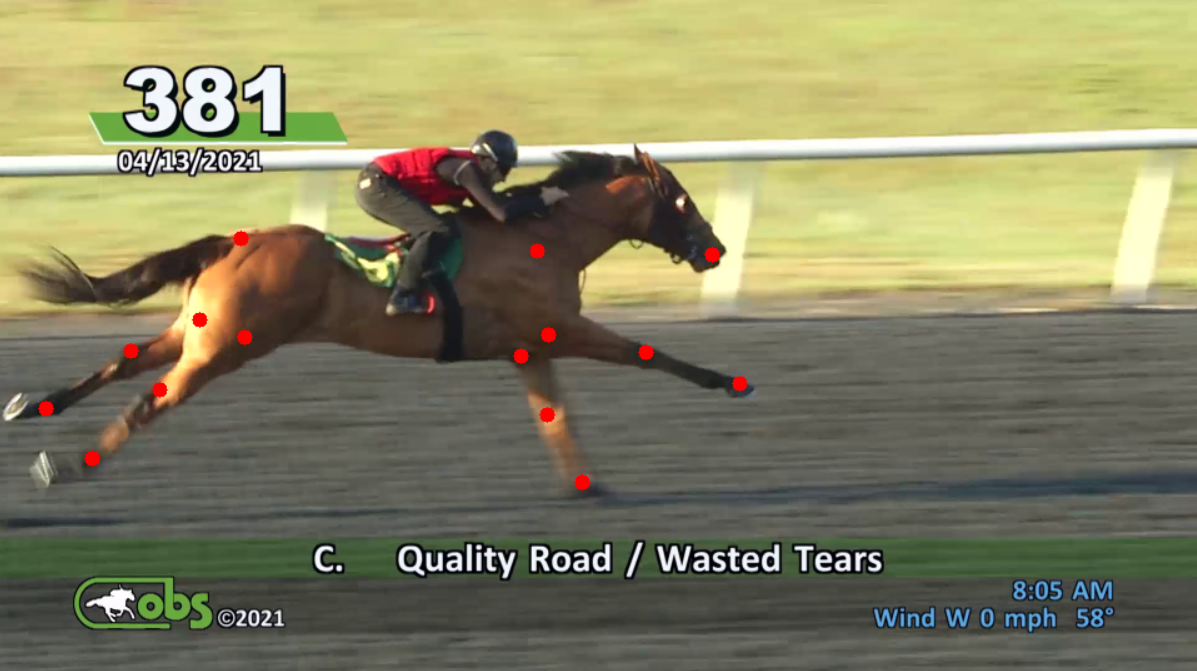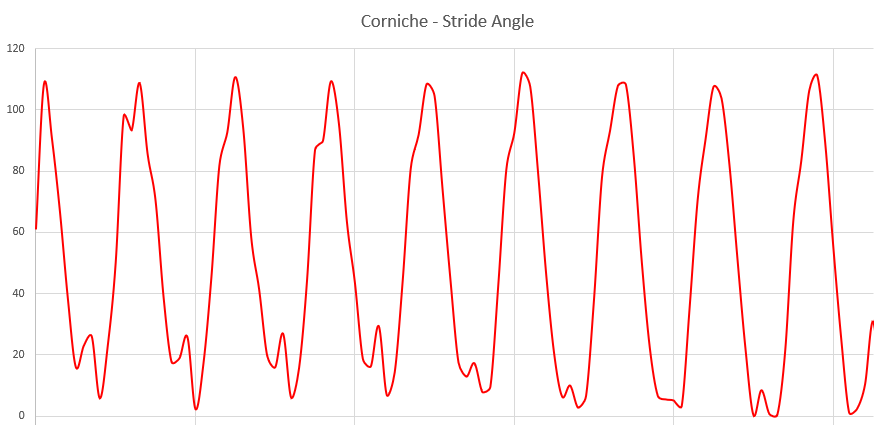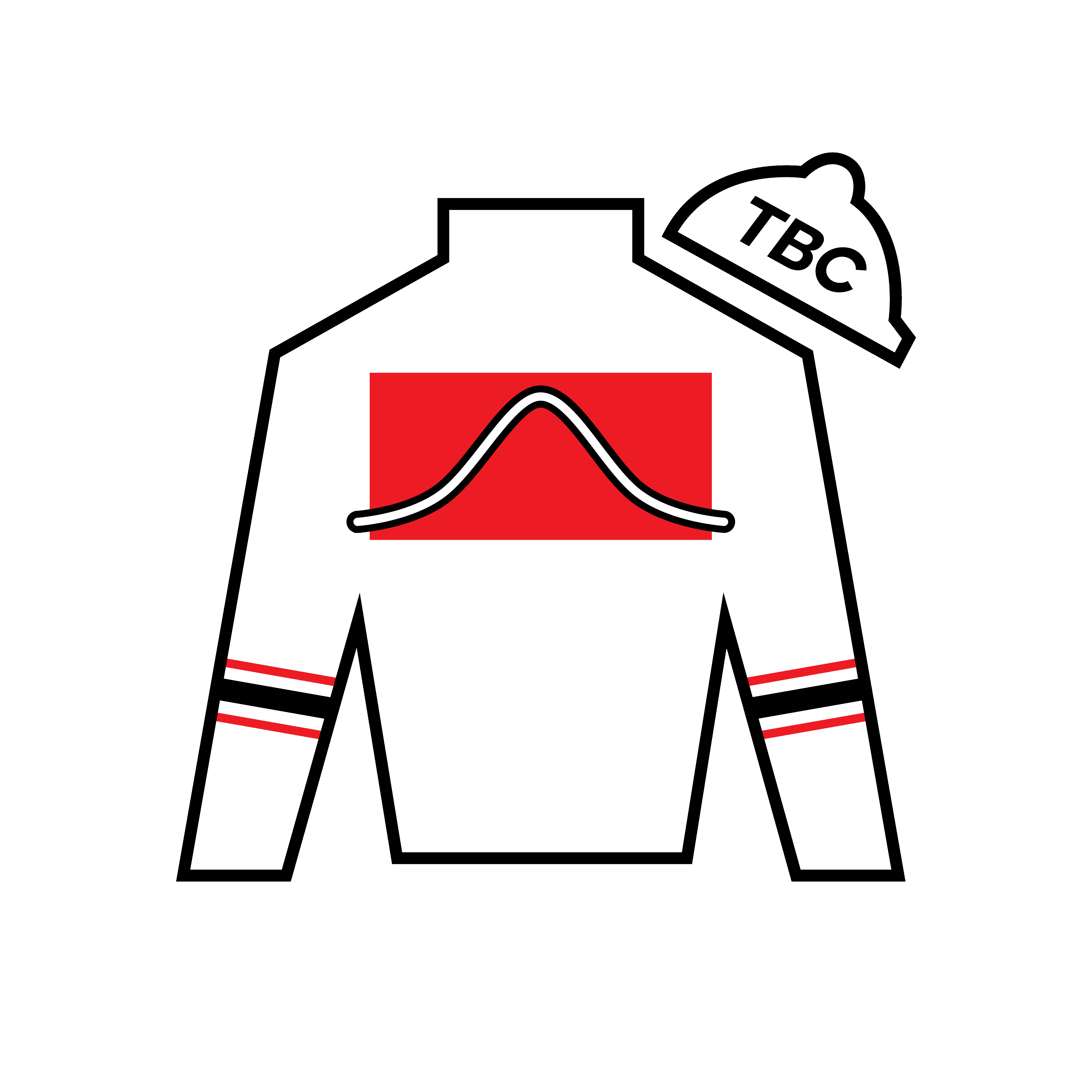Biomechanics

What we’ve done:
- Developed software to extract, process, and clean biomechanical data from video
- Extracted data from 500+ two-year-olds purchased for $100k+ at Spring OBS sales between 2018 and 2021
- Performed initial, surface-level investigation into the efficacy of using biomechanical metrics to improve two-year-old valuation
What we’re currently working on:
- Expanding our dataset to 5000+ two-year-olds from various sales, allowing for enhanced statistical analysis of the intricate relationships between various metrics
- Exploring opportunities to biomechanically track thoroughbreds in training, with a special focus on how a horse progresses throughout a training regimen
Future aspirations:
- Partner with a small number of buyers for upcoming sales to enhance their evaluation of two-year-olds through biomechanical analyses
- Partner with a small number of trainers to provide additional insight into the progression of their barn through daily biomechanical tracking
- Improve racetrack equine safety through biomechanical monitoring on race day
Demo:
To demonstrate our current ability, let’s take a look at the work from 2021 Breeders’ Cup Juvenile winner, Corniche. For this example, we’ll focus strictly on the extraction of a relatively simple metric: stride angle.
After some data processing and cleaning steps, we’re able to produce a graph of Corniche’s stride angle on his lead side.

From this, we can roughly estimate his stride angle to be 111 degrees.
Other Analysis:
Throughout the work, Corniche maintains a stride rate of roughly 148 strides per minute, which ranks in the lowest 4% of the sample of horses we’ve studied. His 26.6ft stride length lands him in the 96th percentile of our study. This combination of low stride rate, high stride length, and fast work time is one of the many factors driving an optimistic outlook on Corniche’s potential. Obviously, most of this positive analysis is moot, as he was purchased for $1.5 million. However, our goal is hunt down cases where our analysis disagrees with the purchase price of a horse, as that’s where the value of such work lies. So, to allow us to encapsulate a horse’s ability over their entire career (not just their two-year-old campaign), let’s take a trip back to the 2019 OBS sale. Included in the sale were two seemingly similar thoroughbreds: City Man (hip 1069) and Weekend Dreamer (hip 392).
| Name | Work Time | Sale Price |
|---|---|---|
| City Man | 10.1 | $185,000 |
| Weekend Dreamer | 10.0 | $200,000 |
The biomechanics, however, tell a different story.
| Name | Stride Angle (Lead) | Stride Rate (SPM) | Stride Length (ft) |
|---|---|---|---|
| City Man | 110.2° | 151.3 | 25.9 |
| Weekend Dreamer | 103.4° | 165.1 | 24.0 |
City Man, though running .1 seconds slower, appears to have traversed his work significantly more comfortably than Weekend Dreamer. In fact, City Man’s stride length was nearly 2ft larger than Weekend Dreamer’s. While many factors are responsible for the repective careers of these horses (an ongoing one for City Man), the biomechanical advantages enjoyed by City Man certainly played a role in the stark differences between the two. Weekend Dreamer earned $64,000 in 17 starts, while City Man has become a multiple graded stakes-winner with over $1 million in earnings.
Obviously, a complete biomechanical analysis encompasses much more than 3 simple metrics. We’re looking forward to completing (and publishing) our research that leverages every aspect of our data. In the meantime, we’re excited to gather as much feedback as possible!
...
